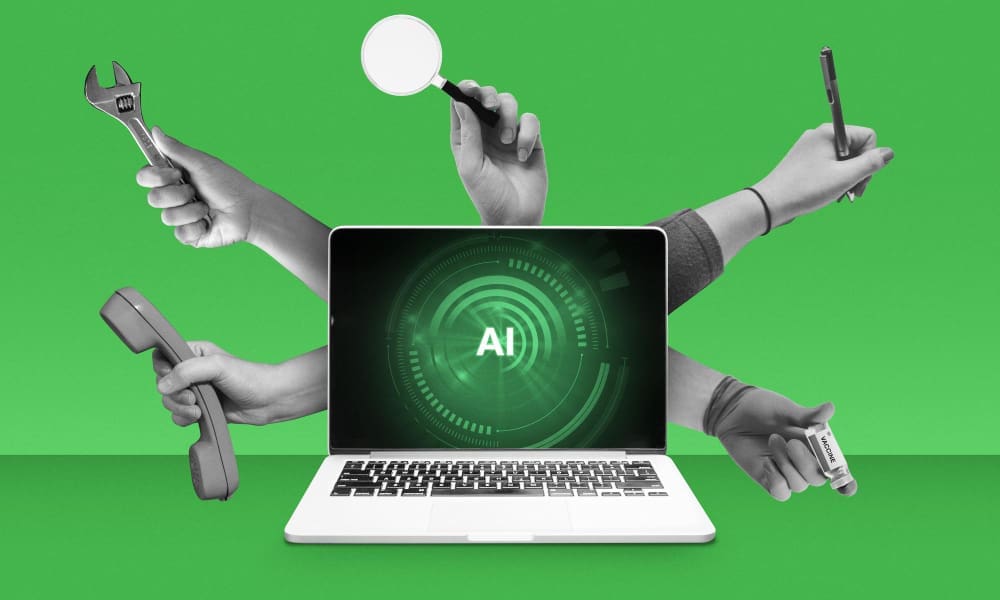Businesses are racing to infuse their operations with artificial intelligence, but many find that off-the-shelf Large Language Models (LLMs) produce generic, and sometimes incorrect, responses that fail to capture their unique brand identity. To solve this, leading companies are now turning to fine-tuning, a powerful technique that customizes a pre-trained AI model on a company’s own data. This process allows a business to imbue an LLM with its specific domain knowledge, conversational style, and brand voice, transforming a general-purpose tool into a highly specialized, proprietary digital asset that can power everything from customer support chatbots to internal knowledge systems.
What is LLM Fine-Tuning?
At its core, a Large Language Model like OpenAI’s GPT-4 or Meta’s Llama 3 is a massive neural network trained on a vast corpus of public internet data. This pre-training gives it a broad understanding of language, reasoning, and general knowledge. However, it knows nothing about your company’s specific products, internal policies, or unique customer interaction style.
Fine-tuning is the process of taking one of these powerful, pre-trained base models and continuing its training on a smaller, curated dataset specific to your organization. It’s not about teaching the model language from scratch; it’s about refining its existing knowledge and adjusting its behavior to align with your specific needs. Think of it like hiring a brilliant, highly educated generalist and then providing them with specialized company training to make them an expert in your field.
This targeted training adjusts the model’s internal parameters, or “weights,” making it more likely to generate outputs that are factually accurate for your domain and stylistically consistent with your brand. The result is an AI that doesn’t just answer questions, but answers them as your company would.
The Business Case: Why Invest in Fine-Tuning?
While prompt engineering—the art of writing detailed instructions for a generic LLM—can achieve good results for simple tasks, fine-tuning offers deeper, more sustainable advantages that create a competitive moat.
Cultivating a Unique Brand Voice
A generic chatbot sounds like a generic chatbot. A fine-tuned model can learn your brand’s specific tone, whether it’s formal and professional, witty and casual, or empathetic and supportive. By training it on your past marketing copy, customer service conversations, and brand style guides, the AI learns to communicate in a voice that is authentically yours, strengthening brand consistency across all digital touchpoints.
Mastery of Domain-Specific Knowledge
Every industry and every company has its own lexicon of acronyms, jargon, and proprietary knowledge. A general LLM may falter when asked about your specific product SKUs, internal software procedures, or nuanced industry regulations. Fine-tuning on internal documentation, product manuals, and support logs teaches the model this specialized knowledge, enabling it to provide accurate, context-aware answers that a generic model simply could not.
Reducing Errors and Hallucinations
One of the biggest risks with LLMs is “hallucination,” where the model confidently states false information. Fine-tuning grounds the model in your company’s factual data, significantly reducing the likelihood of such errors. When the model has been trained on your official knowledge base, it is far more likely to pull answers from that trusted source rather than inventing a plausible-sounding but incorrect response.
Creating Superior Customer Experiences
Customers today expect fast, accurate, and personalized support. A fine-tuned AI can instantly answer complex, product-specific questions that would otherwise require human intervention. This not only improves customer satisfaction with 24/7 expert support but also frees up human agents to focus on the most complex and sensitive issues, increasing overall contact center efficiency.
A Practical Guide to the Fine-Tuning Process
Embarking on a fine-tuning project requires a structured approach. While the technical details can be complex, the strategic workflow can be broken down into five key stages.
Step 1: Define a Clear Use Case
Before writing a single line of code or preparing any data, you must define the specific business problem you are trying to solve. A model fine-tuned for writing creative marketing slogans will be very different from one designed to troubleshoot technical support tickets. A clear objective, such as “reduce customer support response times for Tier 1 inquiries by 50%,” will guide every subsequent decision.
Step 2: Select the Right Base Model
Your choice of a pre-trained LLM is a critical decision. The main choice is between proprietary models offered via API (like OpenAI’s) and open-source models (like Llama 3 or Mistral).
Proprietary models are often easier to get started with but offer less control and can be more expensive in the long run, with data privacy being a key consideration. Open-source models provide maximum flexibility, control, and data security (as you can host them on your own infrastructure), but they require more technical expertise to manage.
Step 3: Curate High-Quality Training Data
This is the most critical and often most time-consuming phase. The performance of your fine-tuned model is entirely dependent on the quality of the data you feed it. The principle of “garbage in, garbage out” has never been more relevant.
Your dataset should consist of high-quality examples of the inputs and desired outputs you want the model to learn. For a customer support bot, this would be pairs of customer questions and ideal, brand-aligned answers. This data is typically formatted in a simple structure, such as an `instruction` and `response` pair. A dataset might contain hundreds or thousands of these examples, sourced from support logs, FAQs, and internal documentation.
Step 4: Execute the Fine-Tuning Job
Once your data is prepared, the next step is the actual training. This involves feeding your curated dataset to the base model and running the training process, which is computationally intensive. Businesses typically use cloud platforms like Google Cloud AI Platform, Amazon SageMaker, or Microsoft Azure Machine Learning, or specialized services like Hugging Face, which provide the necessary GPU resources and software tools to manage the process efficiently.
Step 5: Evaluate, Test, and Iterate
Fine-tuning is not a one-and-done task. After the initial training run, the model must be rigorously evaluated. This involves both quantitative metrics (measuring its accuracy on a test dataset) and, crucially, qualitative human evaluation. Real users should interact with the model to see how it performs on real-world tasks. Based on this feedback, you will likely need to refine your dataset and repeat the process to continuously improve performance.
Fine-Tuning vs. RAG: Choosing the Right Tool
Fine-tuning is not the only way to customize an LLM. Another popular technique is Retrieval-Augmented Generation (RAG). It’s essential to understand the difference to choose the right approach.
RAG works by connecting an LLM to an external knowledge base (like your company’s document library). When a user asks a question, the RAG system first searches the knowledge base for relevant documents and then passes that information to the LLM along with the original question. In essence, it gives the model an “open book” to use for its exam.
The choice between them depends on your goal:
- Use RAG when your primary need is to answer questions based on a large or rapidly changing body of factual information. It is excellent for reducing hallucinations and ensuring answers are based on the latest data.
- Use Fine-Tuning when your primary need is to change the model’s behavior, style, or format. If you want the AI to learn a specific persona or a complex task that can’t be explained in a document, fine-tuning is the superior choice.
For many advanced applications, the most powerful solution is a hybrid approach: first, fine-tune a model to adopt your brand’s voice and understand a specific task structure. Then, integrate it with a RAG system to provide it with real-time, factual data for its responses.
The Final Word on Brand-Specific AI
Fine-tuning a large language model is no longer a capability reserved for tech giants. As tools and platforms become more accessible, it is emerging as a key strategic differentiator for businesses across all sectors. It represents a shift from using generic, one-size-fits-all AI to creating bespoke, intelligent systems that embody a company’s most valuable assets: its knowledge and its brand identity.
The investment in data preparation and compute resources is significant, but the payoff is a powerful, proprietary AI that can deliver unparalleled customer experiences, streamline internal operations, and build a lasting competitive advantage in an increasingly AI-driven world.








